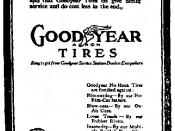Just in time manufacturing (also known as lean production or stockless production), by definition, is a process where inventory is delivered to the factory or company when it is actually needed. Because the internet is taking control of the ordering of supply demands making it more flexible and faster in regards to turn around times, (Songini) JIT manufacturing is credited with reducing costs, improving delivery and quality, and improving performance.
The just in time ordering method has been used for centuries. This method means knowing what to order when. One prominent advantage is the savings a company gets from not having to provide space or warehouses to maintain back stock, some of which is rarely used. Of course the events of September 11th made companies second-guess this method as to deciding if it was really the best plan of action. Due to heightened security issues that followed the 9-11 tragedies, many companies lost money because of the lack of ability to receive merchandise, parts or supplies.
The JIT system "demands a very disciplined assembly line process". Basically if the part is missing, then the assembly line is forced to stop which results in the loss of money. (Songini) This was a lesson learned by the Chrysler Corporation when it was forced to--as a last resort--use the railways in order to get their needed parts across the borders to their manufacturing plants. Despite this flaw, many companies are still choosing this way of business. Automotive giants such as Toyota and computer manufacturing plants for Dell think this type of ordering is more efficient. ("The basic elements of JIT were developed by Toyota in the 1950's and was firmly in place in numerous Japanese plants by the early 1970's." It took ten years for the United States to adopt this method. (Schonberger))...


